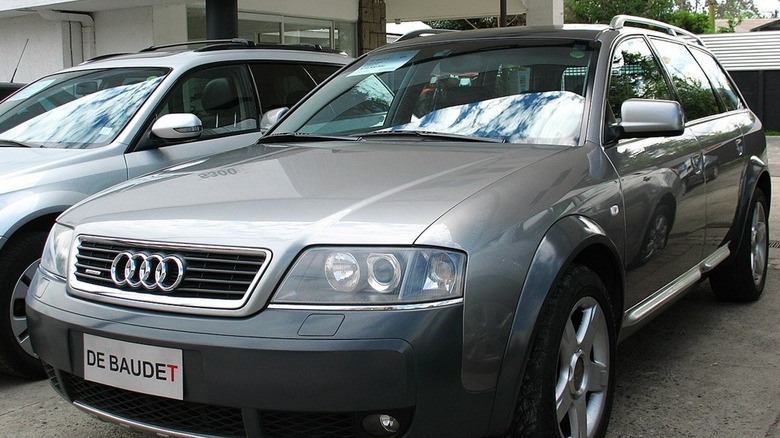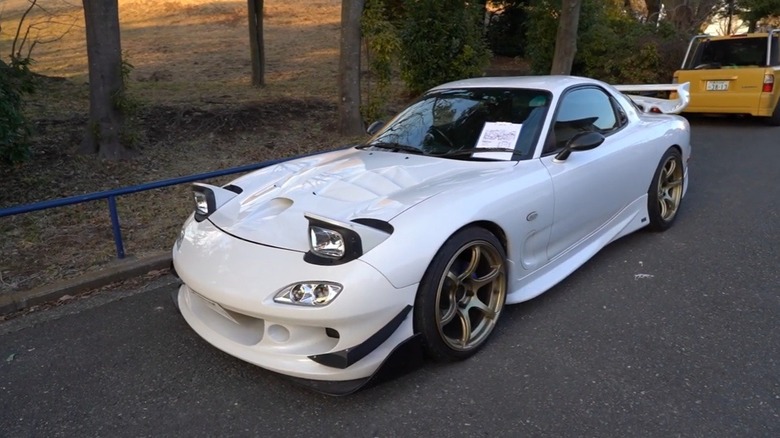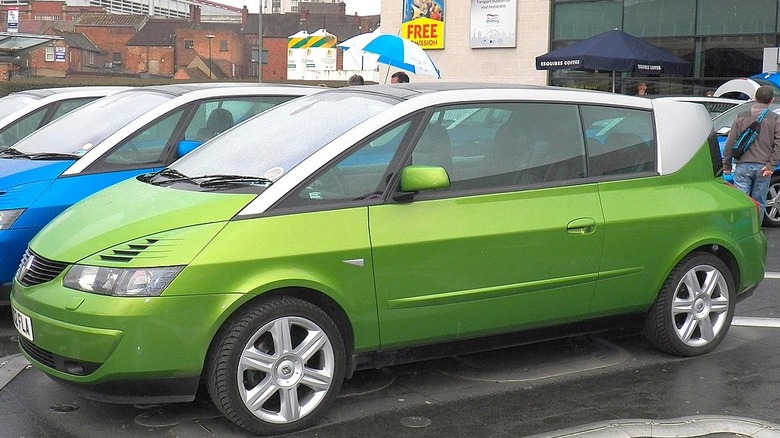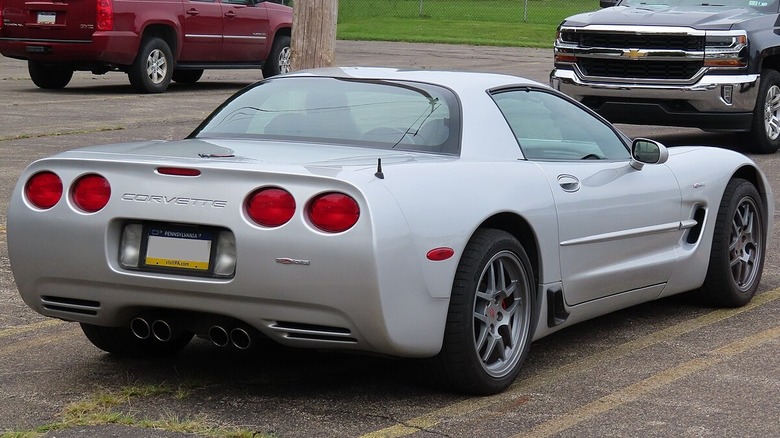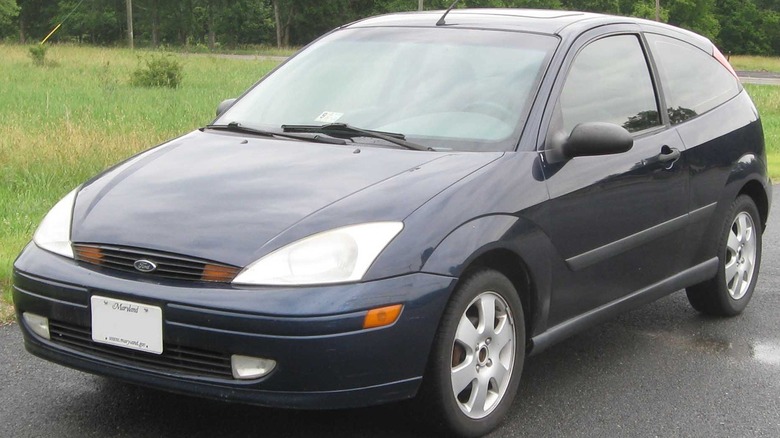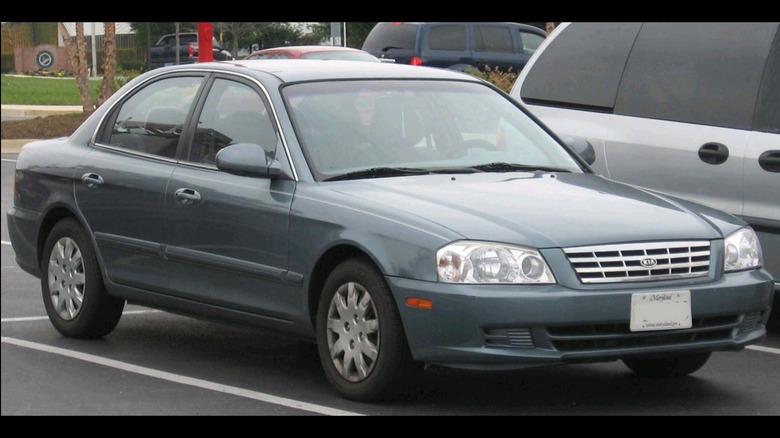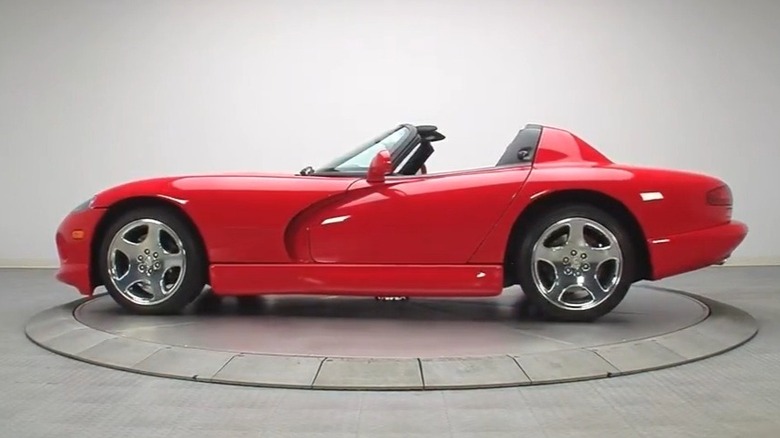10 Cars That Will Become Classics In 2025
The meaning of the phrase "classic car" has variable definitions depending on who you're talking to. There are classic cars and then there are classic cars. For lots of folks, the phrase refers specifically to the smooth, curved rides of the mid-20th century, but the truth is a bit broader.
People often use the terms classic, vintage, and antique interchangeably to describe just about any old car, but each term has its own specific meaning. A vintage car refers only to those manufactured between 1919 and 1930, which covers everything from your typical horseless carriage to the Gatsby-esque Cadillacs and cars of the Prohibition Era. The other two categories are age-dependent. An antique car refers to any vehicle 45 years old or older, while a classic car refers to any car between 10 and 25 years old.
The classic category has no official cutoff. The precise timeframe for classic status varies across jurisdictions, and insurance companies may have their own guidelines as well. We're using a 25-year cutoff for our purposes. That means that every year, a new batch of cars becomes classics and may even qualify for a special license plate, depending on your state's regulations. While every car released 25 years ago is reaching classic status at the same time, we're focusing on vehicles that may be of historical significance or at least have interesting features, making them candidates for restoration or preservation.
What is a model year?
You've probably noticed that the model year of a specific car doesn't necessarily match up with the year in which the car actually comes out. The National Highway Transportation Safety Administration (NHTSA) only requires that the model year and the calendar year of release be no more than two years apart.
A car's model year is a way of separating it from other versions of the same vehicle, regardless of when they hit the streets. Because there are often minor changes in parts or design from year to year, or from generation to generation, knowing your car's model year is critical when it's time for repairs or if there's a product recall.
The practice of releasing the new model year in the summer or fall of the previous year dates back to the 20th century and the behavior of farmers, according to Capital One. In the summer, farmers would harvest and sell their crops, then go looking for something to spend all that money on. Auto makers leapt at the opportunity, releasing new model years right around harvest time. It's harvest time, too, for some of these models. We're stepping into the 2026 model year, so all of our freshly classic 25-year-old cars are selected from the 2021 model year.
2001 Audi A6
The Audi A6 is a well-rounded car that ticks off nearly every box you might want in an everyday commuter. It has gone through several redesigns, resulting in five distinct generations, since it rolled off the factory floor in 1994 for the 1995 model year. That first Audi A6 was a boxy ride that looked like the sort of thing your grandma would drive to bingo.
The second generation, which was manufactured from 1998 to 2001, featured a sleeker design with a bit more cool factor built in. It was a family sedan with a little more flash. By 2001, the second-generation A6 was nearing the end of its run, and Audi had slated a third-generation model for the following year.
The A6 featured Audi's Quattro system (the name given to the company's own all-wheel drive system and built-in ESP (electronic stability program) to help keep the car traveling safely down the road. The most common problems had nothing to do with the car's performance, but with its comfort. Drivers disliked the seat padding and complicated console controls. Drivers also reported rough handling in certain conditions. Still, the 2001 Audio A6 was named one of Car and Driver's 10 best cars from 2001, owing to its appealing design aesthetic, spacious interior and trunk, and plenty of punch to send you down the road.
2001 Chrysler PT Cruiser
Chrysler's PT Cruiser was immediately divisive upon its release in 2001. Approximately 145,000 were sold during the first year, before sales dropped significantly. While there were true believers who drove their PT Cruisers proudly, many folks found the design goofy. A quarter of a century later, the PT Cruiser's unconventional design is what makes it memorable.
While the PT Cruiser didn't hit the road until 2001, it premiered a few years earlier at the 1998 Geneva Auto Show, under the name Pronto Cruizer. It was originally supposed to bear the Plymouth logo, which is where the P in PT Cruiser originally came from. By the time it reached consumers, the Cruiser had switched labels from Plymouth to Chrysler, and the abbreviation's meaning was changed from the Plymouth Transport to the Personal Transport.
At the turn of the millennium, in an era when the newly designed VW Beetle was enjoying renewed success, the PT Cruiser was an attempt to cash in on the market value of nostalgia. Unfortunately, despite its curvy exterior and wood panels, people didn't latch onto the Cruiser's vintage-inspired design as much as manufacturers had hoped.
2001 Ford Escape
The Ford Escape was first introduced in the 2001 model year, offering a smaller option for SUV drivers, while still delivering plenty of power. The Escape remains a dependable part of Ford's lineup 25 years later, reinforcing its status as a classic and ongoing part of the automotive landscape.
Over the years, the Escape has gone through a number of improvements. By 2005, consumers could purchase a hybrid Escape, marking the first consumer hybrid SUV on the market. In 2007, the second-generation Escape emerged with an upgraded engine. The modern fourth generation was introduced during the 2023 model year, upgrading the traditional physical gauges with the increasingly popular digital alternative. They also looked a little sleeker than they did at introduction, with dimples in the side panels and narrower, updated headlights.
Despite its small size, when compared to its competitors, the Escape offered 63 cubic feet of cargo space with the seats down. The Ford Escape succeeded, at least in part, by straddling the line between the capacity of an SUV and the flexibility of a smaller vehicle. And it did it while still delivering power on the road.
2001 Lamborghini Murciélago
The Lamborghini Murciélago, named after a legendary bull from the late 19th century, was manufactured from 2001 to 2010, though it didn't hit the United States until the 2002 model year. It featured a dynamic cooling system with pop-up rear wings, among a host of other rad design features. With its low profile and angular design, it looked almost like a predator ready to pounce. It was one of the coolest cars to come out in 2001, representing high-end luxury vehicles from the turn of the century.
While the Murciélago was made by Lamborghini, it was designed by famed automotive designer Luc Donckerwolke. He's currently the chief creative officer of the Hyundai Motor Group, but before that, he worked for Audi, which included work for the Volkswagen and Lamborghini brands.
During his tenure with Audi, Donckerwolke designed the 2001 Lamborghini Diablo, the 2004 Lamborghini Gallardo, and the Lamborghini Murciélago. His list of car credits and designs includes, but is not limited to, the Audi A4, Audi R8, Audi A2, and the aforementioned Lamborghinis. For Hyundai, he's designed the 2018 Palisade, the 2020 Sonata, and the 2021 Elantra, just to name a few. His design credits are many and impressive, and he brought those talents to the Lamborghini Murciélago when he was arguably at the height of his career.
2001 Mazda RX-7
The 2001 model year was the penultimate Mazda RX-7, having been manufactured from 1978 until 2002. It's long been considered a classic among fans of fast cars, appearing on roadways both real and fictional.
A 1993 Mazda RX-7 features prominently in the 2001 film "The Fast and the Furious," driven by Dominic Toretto (Vin Diesel) himself. It's the car he's driving during the first big street race, when Brian O'Conner (Paul Walker) races Toretto for pink slips. Here in the real world, the RX-7 offered the fun and feel of a racecar but without the sticker shock of a luxury sports car.
The 2001 was part of the third generation, considered by some to be one of the best Japanese sports cars from the turn of the millennium. It was produced until 2002 when the RX-7 was discontinued to make room for the RX-8. The RX-7 offered 255 horsepower with a few common modifications. Even today, there are some customer RX-7s on the road with some truly unexpected power, making it a favorite on racetracks both in the real world and on the big screen.
2001 Renault Avantime
The Renault Avantime was one of the weirdest cars made in the last 25 years, an experiment in imagining what a car could look like. Manufactured by Matra and marketed by Renault between 2001 and 2003, the Avantime combined the elements of several different car types to deliver something as engaging as it is unusual.
It debuted as the Coupespace at the 1999 Geneva Auto Show, and it certainly had some faults, including only two doors on what was ostensibly a passenger vehicle with spacious seating for four. With no rear doors or sliding doors, the two remaining entry points had to be uniquely large and cumbersome. It had other unique features, too. The rear seats were boosted in what Renault called theater-style seating, and the luggage compartment had retractable straps to keep your cargo in place.
Perhaps the coolest feature was the ability to retract all of the windows and the oversized sunroof with the press of a single button, transforming the car into something close to a framed convertible. The Avantime never made it to the United States, and it sold poorly in Europe, with only about 8,500 units sold during its lifetime, not enough to sustain the car long term. Still, it looked pretty cool and was a welcome bit of automotive innovation.
2001 Chevrolet Corvette
If it bears the name Corvette, it's a safe bet it's going to be cool. The 2001 had the prototypical Corvette design with a narrow, streamlined frame, sloping snout, and smooth lines. It was also the last generation to feature those iconic pop-up headlights, and it was as fast as it looked. The Corvette could go 0 to 60 in about 4 seconds and could run a quarter mile from a dead stop in about 12 seconds. It's a car that speaks for itself and is likely to remain in demand long into the future.
The 2001 was otherwise known as the C5, part of the fifth generation manufactured from 1997 to 2004. It was also offered in a variant known as the Z06, the most powerful production Corvette ever made at the time, according to Car and Driver. It featured an upgraded LS1 V-8 engine called the LS6, improved intake and exhaust ports, and a higher compression ratio, among other engine improvements.
Consumers also had the option of the C5-R, a modified C5 Corvette with a larger engine and a modified frame, designed to operate at high velocities on the racetrack. That design turned out to be incredibly successful, taking home 10 trophies from 17 races between 2001 and 2002 for drivers like Dale Earnhardt and Dale Earnhardt Jr.
2001 Ford Focus
The Ford Focus was manufactured from 1998 to 2025, making it a car whose identity is inextricably tied to the new millennium. It was a popular compact car in the early 2000s, thanks in no small part to its familiar yet unique design. In particular, the five-door hatchback had a striking look that holds up even today. In the late '90s and early 2000s, when the Focus first hit the road, it offered an affordable vehicle that felt fresh and fun to drive. With its enhanced curves around the wheelwells, it stood apart while still feeling at home on the roads of the early aughts.
In 2001, Ford released an updated Focus hatchback. The engine was updated to meet new (at the time) European emissions standards. In the base model, the interior driving experience was more or less unchanged, but the updated model came with optional enhanced features, including a six-CD changer built into the dashboard and an onboard navigation system. Those are both technologies that have been made redundant by smartphones, but were pretty impressive features at the time.
Ford designed the Focus intentionally in an attempt to create a car that would appeal to the masses and sell all over the globe. Twenty-five years and millions of sales later, as the last Ford Focus model year rolls onto the roads, there's no arguing that it accomplished its task.
2001 Kia Optima
Drivers first started to see the Kia Optima on the road in the 2001 model year, though not necessarily under that name. It's a car with something of an identity crisis, but that hasn't prevented it from remaining a success. Over the years, the Optima has gone by a number of names, depending on the year and the market.
While U.S. driver primarily know it as the Optima, in South Korea, it has been known as the Kia Lotze. Starting in 2002, it was known as the Kia Magentis in Canada and Europe. Beginning with the fifth generation in 2019, the name was switched to the Kia K5 in all markets. Throughout its history, the Optima has been a relatively straightforward passenger sedan built on the foundation of the Hyundai Sonata, regardless of what it was called.
About 26,000 were sold in the United States and another 53,000 in South Korea during the 2001 model year, all of which will become classics this year. Sales continued apace over the next decade, peaking in the mid-2010s before leveling out again. Sales of the K5 (the current moniker) for 2024 came in at approximately 80,000 units, nearly in line with the 2001 numbers. While it has a smaller portion of market share than it once did, and despite some years being more reliable than others, the Optima remains one of the most successful models in the Kia lineup.
2001 Dodge Viper
The Dodge Viper's origin is weird and explains its unusual position in the automotive landscape. Development began in 1989, and it was still in pre-production when it debuted as the pace car at the 1991 Indianapolis 500. Dodge had originally planned to pace the race with the Japanese-built Dodge Stealth, but swapped it out following complaints about a Japanese-made car pacing what some see as a quintessentially American race.
Manufactured from 1992 to 2017 (with a few breaks along the way), the Dodge Viper was a powerful yet uncomfortable vehicle, designed to cruise and capture attention, with few considerations for comfort. It has been called the most American supercar ever made. The Viper's prototype nature at release was apparent in its first generation, which lacked typical car features like exterior door handles, air conditioning, windows, or a roof. The 2001 was part of the car's second generation, which was manufactured from 1996 to 2002. This version was a little more consumer-friendly, swapping out some of the race car features for more typical automotive features.
The Viper has been described as little more than a seat strapped to a massive engine and some tires, a car that makes no concessions to your feelings and cares about only one thing: power. Practically every review from anyone who has driven or ridden in one is like a love letter from inside an uneven relationship, punctuating adoring commentary with withering complaints. It's cramped, it's hot, it's uncomfortable, and it's undeniably cool.


